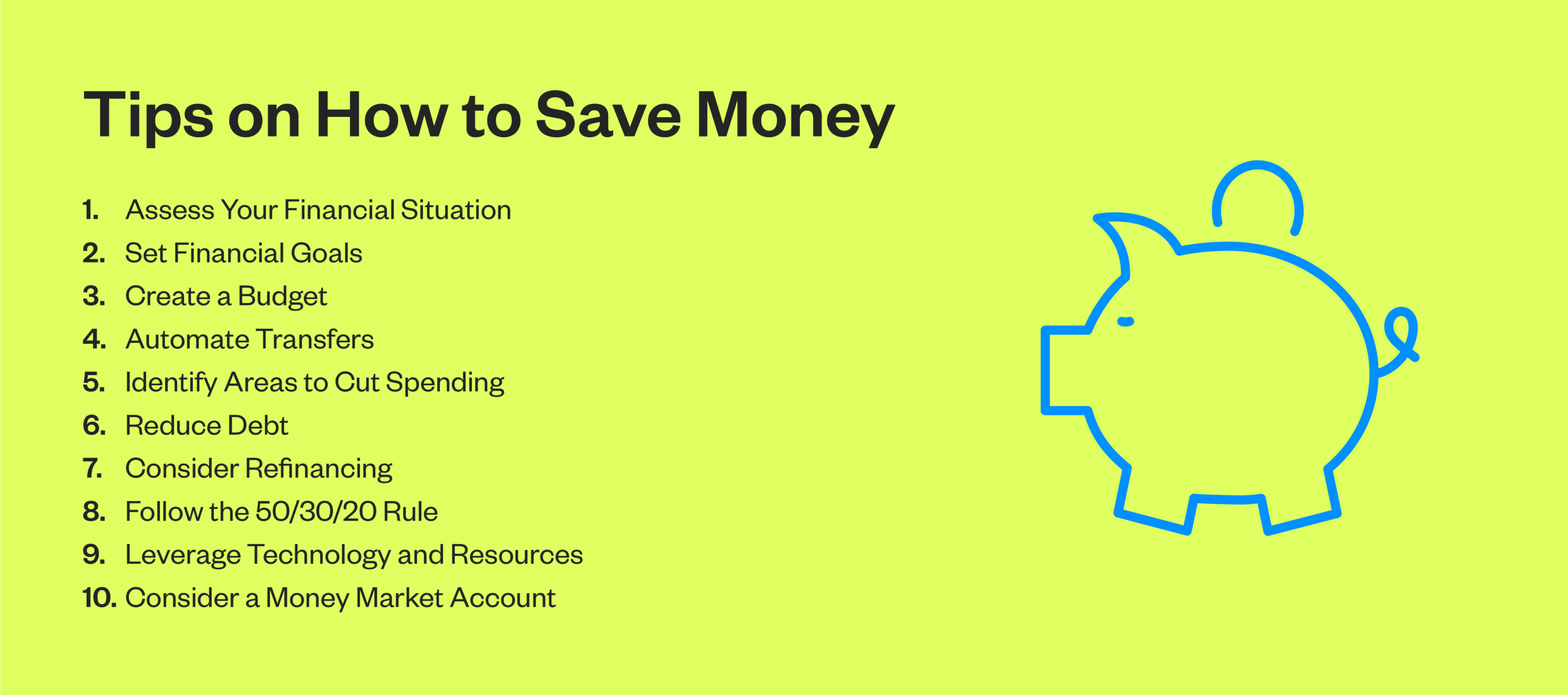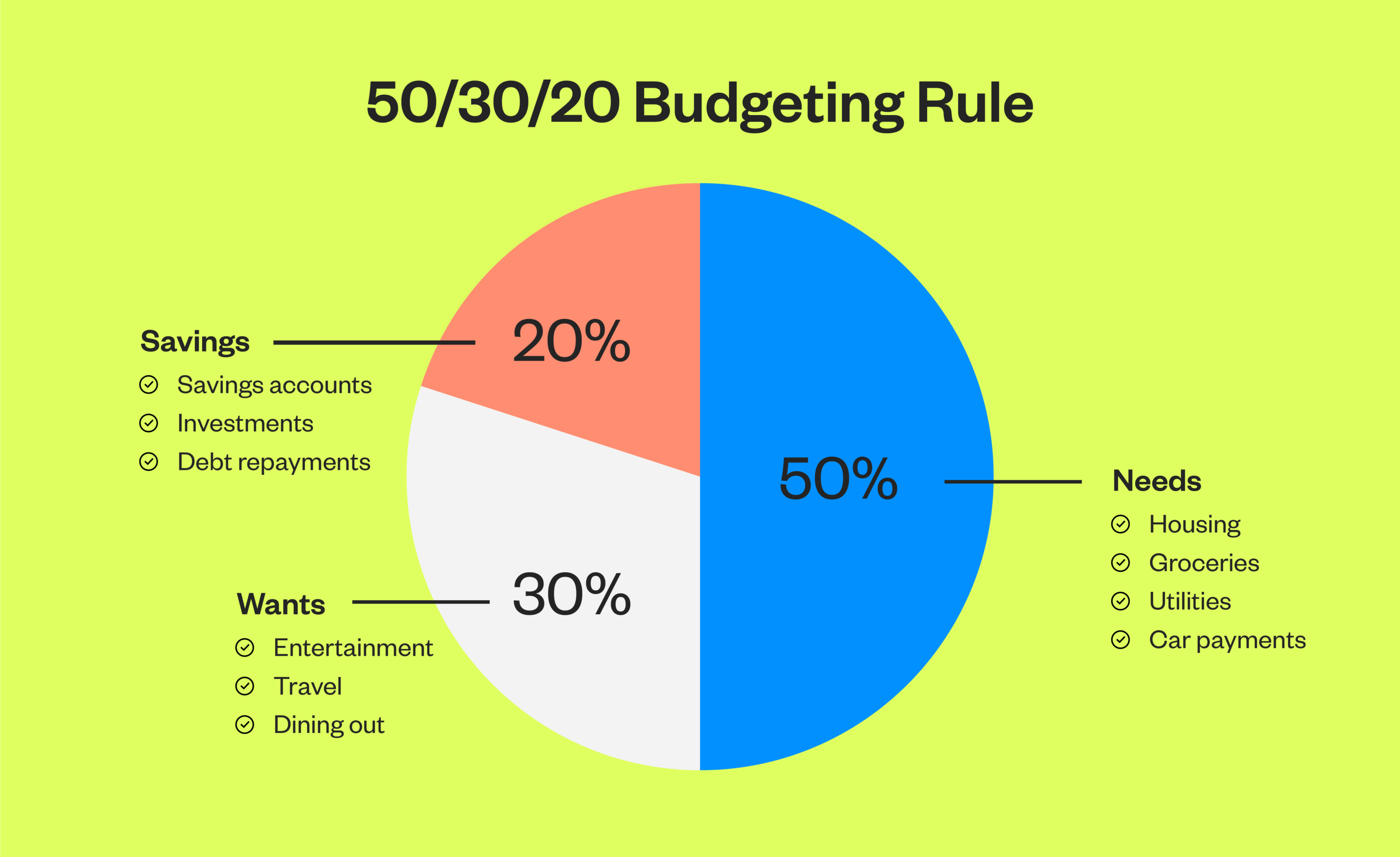

10 Tips on How to Save Money
Saving money is more important than ever. Whether saving for a rainy day, planning a big purchase or building a nest egg for the future, every penny counts. If you’re here looking for the best ways to save money, you’ve come to the right place.
From budgeting techniques to savvy shopping strategies, let these tips empower you to make the most of your income and save more. Keep reading for our ten tips on how to save money:

1. Assess Your Financial Situation
Take a comprehensive look at all sources of income, including salaries, bonuses, side hustles and any other sources of revenue. Next, track your spending habits meticulously. You can use budgeting apps, spreadsheets or even pen and paper to monitor incoming and outgoing money.
Identify where your money goes each month and categorize expenses into essentials like rent, groceries, utilities, etc. Then, make a list of non-essentials like entertainment or subscriptions.
2. Set Financial Goals
Make your money goals specific, measurable, achievable, relevant and time-bound (SMART). Start with short-term goals, like paying off a small debt. Then, focus on medium-term goals, like saving for a down payment on a house. Finally, you can think about longer-term goals, such as retirement savings.
3. Create a Budget
A budget is a plan for your money. It helps you know how much you have coming in and how much you spend. Creating a better budget ensures you use your money wisely.
To make a budget, take the income and expenses you calculated in tip one (above) to give you a clear picture of what’s coming in and going out. With this information, you can look for ways to cut back, like eating out less or canceling subscriptions you don’t need.
4. Automate Transfers
One of the most important tips for saving money is automating transfers from your checking account to your savings account or other accounts. This method helps you save consistently, and you can set up transfers to happen on payday or at regular intervals, like weekly or monthly.
5. Identify Areas to Cut Spending
With your budget in hand, you should know how many of your expenses are necessities and how many are non-essential. Cutting spending means identifying ways to spend less money on the items you don’t really need, allowing you to save more. Some areas where you might be able to save include groceries, subscriptions, eating out, entertainment and more.
6. Reduce Debt
Debt can significantly affect how much you can afford to put toward savings while also impacting your credit score and ability to secure financing when needed. When you have less debt, you save money because you won’t be paying as much interest, which is the fee for borrowing money from a bank, credit card company or lender.
Common types of debt include student loans, auto loans, mortgage and credit card debt. Building good credit and paying off debt helps to frees up money you can put into your savings.
7. Consider Refinancing
Refinancing replaces your current loan – home, auto, personal or student loan — with a new one that often has better terms like a lower interest rate or longer repayment period. This loan can help you save money in the long run because it can lower your monthly payments or reduce the total amount you’ll pay over time in interest.
8. Follow the 50/30/20 Rule
The 50/30/20 rule is a budgeting principle to help you manage your money better. Here’s how it works:

- 50% for needs: Allocate 50% of your income to cover essentials like rent or mortgage, groceries, utilities, transportation and minimum debt payments.
- 30% for wants: Use 30% of your income for discretionary spending — the things you won’t but don’t necessarily need. This can include dining out, entertainment, hobbies and other non-essential items.
- 20% for savings and debt repayment: Save or use 20% of your income for financial goals like building an emergency fund, planning for retirement or paying off debt faster.
9. Leverage Technology and Resources
Using tools and tech can make managing your money easier and help you become more financially savvy while learning how to budget and save money. A few tools you can use include:
- Budgeting apps: Budget apps can track your spending, categorize expenses and set savings goals.
- Money trackers: Use these tools to monitor your expenses and income, identify trends and adjust your budget as needed.
- Online resources: Read blogs, articles, podcasts and videos that offer tips, advice and strategies for better money management.
- Financial education: Try free financial counseling services to improve your financial literacy. Talk to an advisor at your bank or credit union about budgeting, saving and investing, debt management and retirement planning.
10. Consider a Money Market Account
A money market account is essentially a credit union or bank’s version of a high-yield savings account. These accounts pay higher interest rates than most typical savings accounts. This means you can grow your money faster over time.
Money market accounts also give you easy access to your money. You can typically withdraw through checks, debit cards or electronic transfers.
Key Takeaways: How to Save Money
Learning how to save money is a process that involves assessing and reassessing your financial situation, setting goals and creating a budget that aligns with those goals. At California Credit Union, we understand the importance of saving money and can help you achieve your financial goals. From money market accounts to personalized financial guidance, we’re here to help you make the most of your money. Become a member to start saving today.





